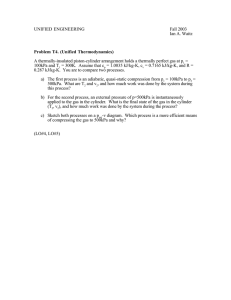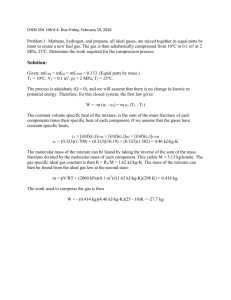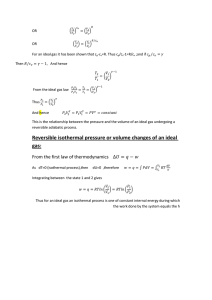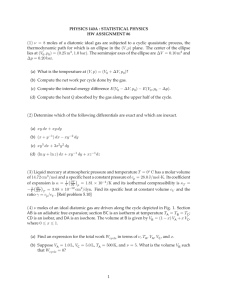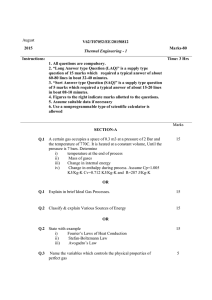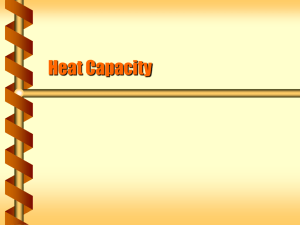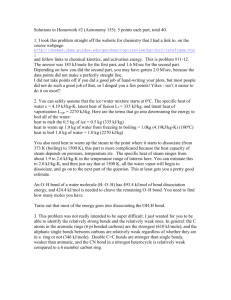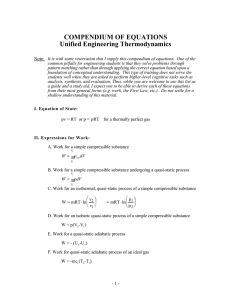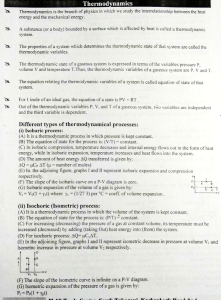UNIFIED ENGINEERING Fall 2003 Ian A. Waitz
advertisement
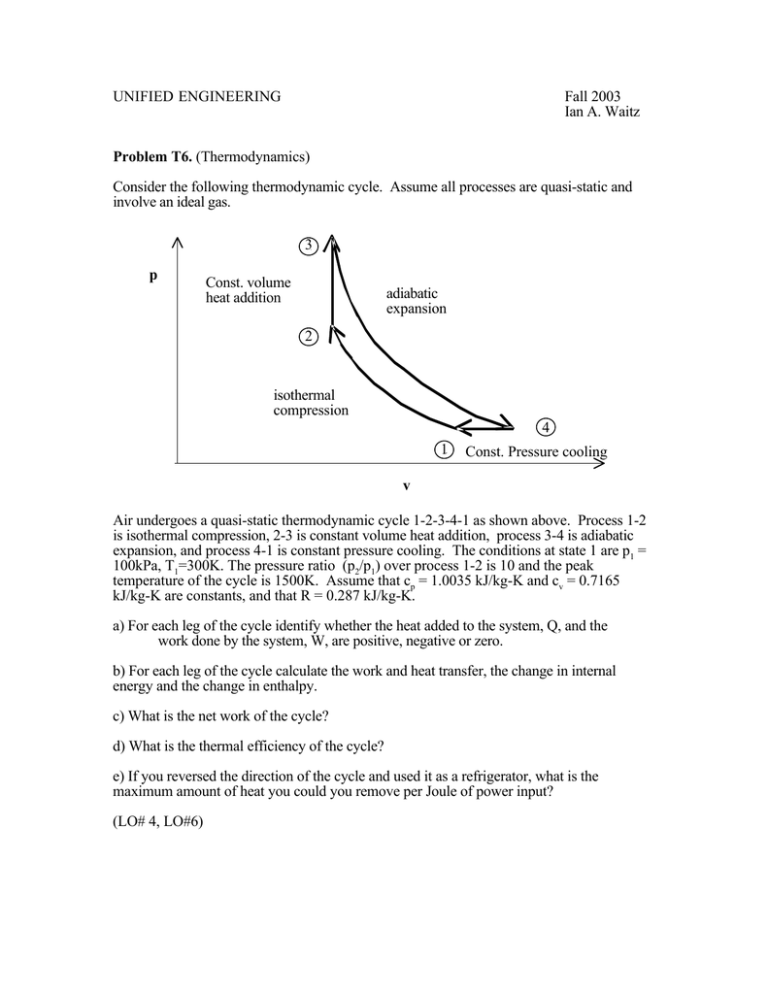
UNIFIED ENGINEERING Fall 2003 Ian A. Waitz Problem T6. (Thermodynamics) Consider the following thermodynamic cycle. Assume all processes are quasi-static and involve an ideal gas. 3 p Const. volume heat addition adiabatic expansion 2 isothermal compression 4 1 Const. Pressure cooling v Air undergoes a quasi-static thermodynamic cycle 1-2-3-4-1 as shown above. Process 1-2 is isothermal compression, 2-3 is constant volume heat addition, process 3-4 is adiabatic expansion, and process 4-1 is constant pressure cooling. The conditions at state 1 are p1 = 100kPa, T1=300K. The pressure ratio (p2/p1) over process 1-2 is 10 and the peak temperature of the cycle is 1500K. Assume that cp = 1.0035 kJ/kg-K and cv = 0.7165 kJ/kg-K are constants, and that R = 0.287 kJ/kg-K. a) For each leg of the cycle identify whether the heat added to the system, Q, and the work done by the system, W, are positive, negative or zero. b) For each leg of the cycle calculate the work and heat transfer, the change in internal energy and the change in enthalpy. c) What is the net work of the cycle? d) What is the thermal efficiency of the cycle? e) If you reversed the direction of the cycle and used it as a refrigerator, what is the maximum amount of heat you could you remove per Joule of power input? (LO# 4, LO#6)
